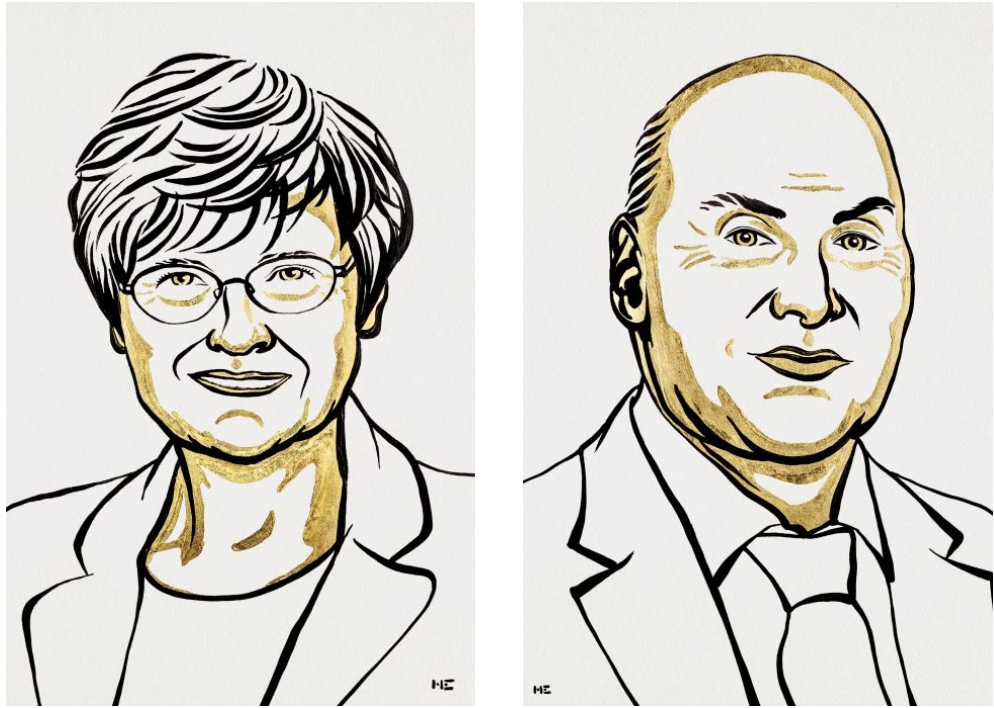
2023 Nobel Prize in Physiology or Medicine: Modifying mRNA for Use in Vaccines
October is possibly the most exciting month of the year for scientists around the world. It is when the Nobel Assembly at Karolinska Institutet awards the Nobel Prizes. As per Alfred Nobel’s will, the Nobel Prizes are awarded to the persons “who shall have made the most important discoveries” in five different domains: physics, chemistry, physiology or medicine, literature and peace.
The first Nobel Prize of 2023 announced was in physiology or medicine, and the award went jointly to Katalin Karikó and Drew Weissman for their discoveries concerning nucleoside base modifications that enabled the development of effective mRNA vaccines against COVID-19.
Vaccines, in summary, stimulate the immune system to produce a “response” to a specific pathogen in the body. This gives the body the advantage of a head start when it actually encounters that specific pathogen.
Before the COVID-19 pandemic, several methods were tried for manufacturing vaccines. Historically, vaccines were primarily produced using traditional methods such as inactivated or attenuated pathogens. Vaccines against polio, measles, and yellow fever were largely produced this way. However, this method is time-consuming and carries some risks.
Advances in biotechnology and molecular biology revolutionised vaccine development and production, allowing the scientists to use individual viral components instead of whole viruses to develop vaccines. They began using parts of the viral genetic code, particularly the parts encoding certain surface proteins. These vaccines use harmless pieces of the pathogen to stimulate an immune response without causing the disease “as if” the pathogen is actually inside the body. The immune system recognises these surface proteins as “foreign,” produces antibodies against it as an immune response, and encodes it in its immune memory. This way, if the body is ever exposed to the actual virus, the immune system can quickly recognise and respond to it by producing antibodies to neutralise it. An alternative method is using harmless viruses as delivery vehicles to carry these bits of genetic material.
There is a downside to producing vaccines that rely on whole viruses, their proteins, or vectors carrying their genetic code. They rely on large-scale cell cultures, which require a lot of resources and are not not fast enough in case of outbreaks and pandemics. Synthetic biology techniques enabled the design and synthesis of vaccines from scratch. This led to the development of vaccines without the need for growing cell cultures, which increased the production speed and also reduced the risk of contamination.
And finally, mRNA vaccine technology was developed, exemplified by the COVID-19 vaccines of Pfizer-BioNTech and Moderna. This groundbreaking approach involves introducing a small piece of messenger RNA (mRNA) that instructs cells to produce a harmless spike protein found on the surface of the virus. The rest works the same way as other methods: The immune system learns to recognise and fight this protein, providing immunity without exposing the individual to the actual virus.
In cells, genetic information is encoded in DNA. This code, whenever needed, is transferred to mRNA, which is then used as a “template” by the body to produce proteins. When the scientists first developed methods to produce mRNA without using cell cultures (in vitro), the resulting molecule was often unstable and caused inflammatory reactions. It was also challenging to deliver these molecules, which required sophisticated carrier lipid systems to encapsulate the mRNA. These were discomforting obstacles.
Hungarian biochemist Katalin Karikó was focused on developing methods to use mRNA for therapeutic purposes. During the early 1990s, she became colleagues with the immunologist Drew Weissman at the University of Pennsylvania. They were both interested in dendritic cells, which have important functions in immune surveillance and the activation of vaccine-induced immune responses. The two soon became collaborators and started studying how different types of RNA interact with the immune system.
Karikó and Weissman noticed that it was the dendritic cells that led to the inflammatory reactions when in-vitro transcribed mRNA enters the body. These cells were recognising the mRNA as a foreign substance, resulting in the release of inflammatory signalling molecules. They wondered why the in vitro transcribed mRNA was recognised as foreign while mRNA from mammalian cells did not give rise to the same reaction. The four bases making up the RNA (A, U, G, and C) in mammalian cells are often chemically modified, a feature that in vitro transcribed mRNA lacks. To investigate whether this was indeed the reason, the duo produced different variants of mRNA carrying various altered bases. These chemically modified bases did eliminate the inflammatory response, and thus offered a promising way to produce safer mRNA molecules in the laboratory from scratch to use in therapies. Their results were published in 2005, fifteen years before the COVID-19 pandemic shook the world.
Karikó and Weissman showed in their later studies that the delivery of mRNA with modified bases also resulted in higher protein production than unmodified mRNA. Lower risk of inflammatory response and higher protein production meant that the duo had eliminated two major obstacles in using in vitro transcribed mRNA for therapeutic purposes.
When the COVID-19 pandemic began, several companies had already been working on utilising this new mRNA technology to develop vaccines (for Zika virus and MERS-CoV in particular). Two companies quickly began working on it to develop a vaccine targeting the SARS-CoV-2 surface protein. The vaccines were ready in no time, proved to have very high protective effects, and got approved as early as December 2020, saving millions of lives around the world.
The most striking feature of mRNA vaccines is that they can be developed impressively quick. The same technology may one day be used to deliver different therapeutic proteins and treat some cancer types.
The groundbreaking work and findings of Katalin Karikó and Drew Weissman, not only made it possible for scientists to develop effective vaccines at record speed during one of humanity’s biggest health crises, but also changed our understanding of how mRNA interacts with the immune system.
REFERENCES
- 1. https://www.nobelprize.org/
